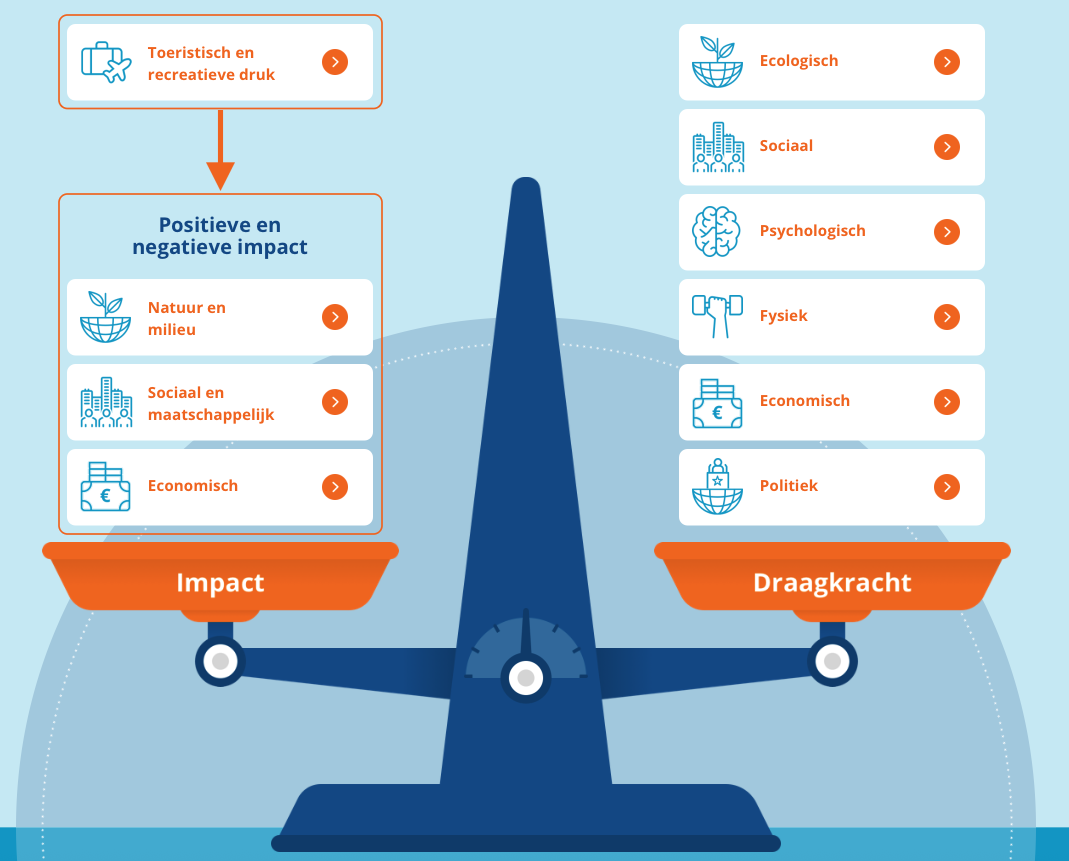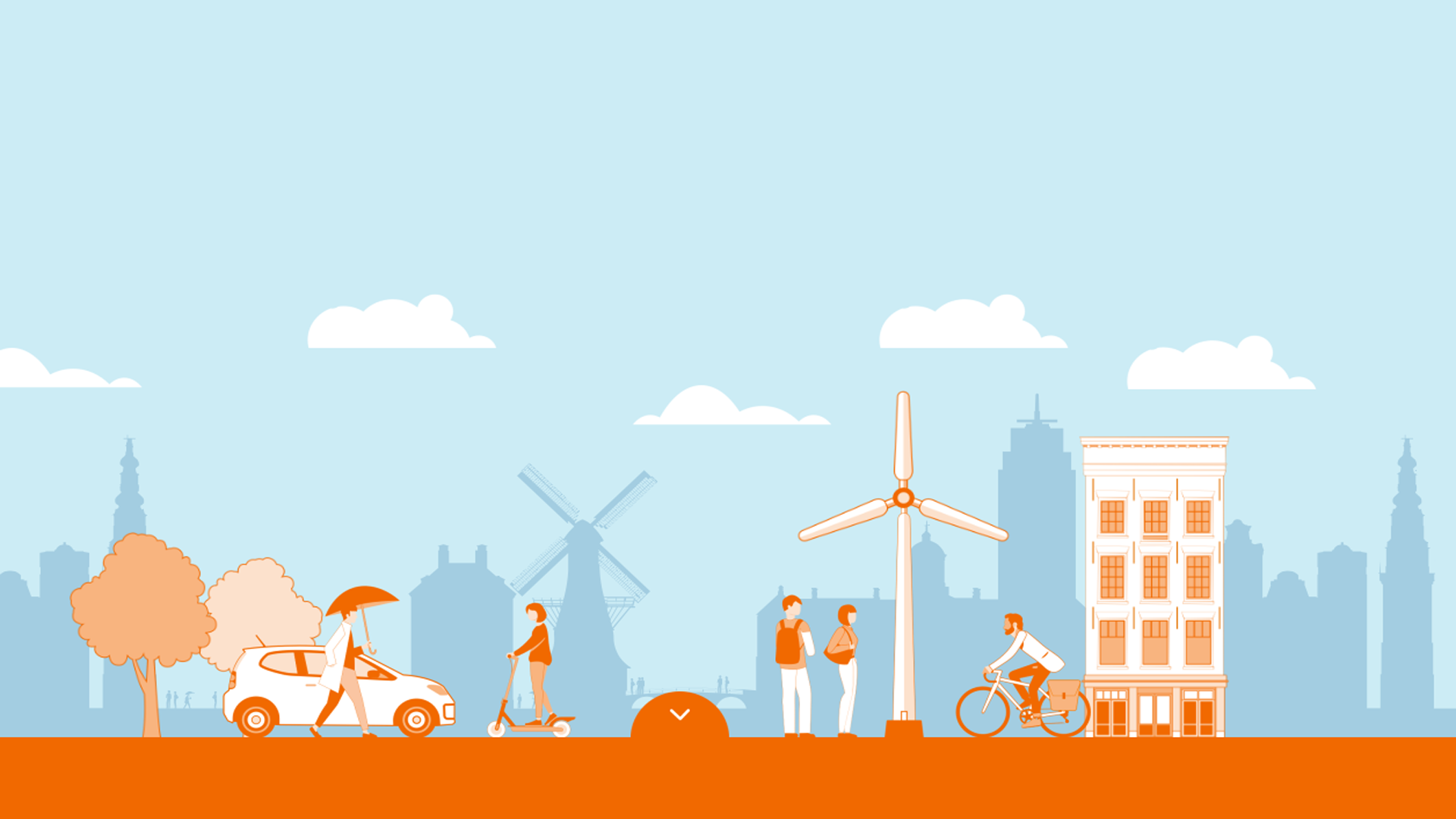Tourism in balance? How do you measure that?
Balance is a much-discussed topic in the tourism domain. But what exactly is balance, and how can you measure it objectively? This question is extremely relevant for parties that act at the destination, such as governments and destination management organisations.
The Rli already stated in its report 'Valuable Tourism' in 2019 that a balanced tourism-recreational policy requires a careful analysis of all the impact of tourism and recreation on the economy, society and living environment. Despite many (international) studies on sub-aspects of balance, an integrated method to make a destination in balance measurable has so far been lacking. This has now been investigated for the first time in the study 'Valuable tourism is working on balance'.
The research 'Valuable tourism is working on balance' of the Data & Development Lab was carried out by the HZ University of Applied Sciences, Breda University of Applied Sciences and NHL Stenden Hogeschool - collaborating in Center of Expertise Leisure Tourism & Hospitality (CELTH), with the Netherlands Bureau for Tourism and Congresses (NBTC) and Saxion University of Applied Sciences.
Insights Expert Evelien-Visser Jonker of NBTC about the background and reason for the research: “Balance is a much-discussed theme within the tourism sector. However, a method to measure balance is currently lacking. With this DDL project we have provided insight into the various components of balance and how this can be measured. This in turn can be used as a starting point for discussions about balance at a destination.”
Balance on the scales
The first conclusion is that there is no single method that maps both impact and carrying capacity. That is why the most useful indicators and available data for each aspect to be measured are listed in the final report and the online tool. New is the introduction of the scale for measuring balance with the “impact” on the one hand and the “carrying capacity” on the other. As a destination, you want to keep these two sides of the scale “in balance” as much as possible. Attention to both impact and capacity is essential for project manager Diana Kortweg Maris of the HZ Kenniscentrum Kusttoerisme: “Many studies at home and abroad focus on the impact of tourism, but many people involved in the Netherlands seem to find the capacity of the destination just as important. That side of the scale has often been underexposed so far.” The impact scale includes the tourist pressure on a destination and the impacts that tourism has on nature and the environment, economy, and social life. On the other side of the scale is the carrying capacity with the ecological, social, psychological, physical, and economic factors.

To an optimum
Another extremely relevant conclusion is that it is not about finding maximum numbers or exact limit values, but about an optimum to be achieved. The positive impact of tourism and recreation must be greater than the negative impact, the impact must be equally distributed among those involved and the tourist pressure must fit within the carrying capacity of a destination, both per sub-topic and as a whole. Korteweg Maris explains: “Based on many studies at home and abroad, we are now making a proposal for universal indicators for measuring impact and carrying capacity. But there are no universal limit values, every destination is different, which means that a qualitative assessment by experts is essential.”
Part of policy cycle
The main recommendation is that research into balance should become part of the policy cycle regarding tourism and recreation. The direction for this rests emphatically with the government. Because there is no single golden formula for balance that determines everything, the subject requires working sessions with experts from different angles. Prior to the research to determine the methods and the data required for this and afterwards to interpret the results. Evelien Visser-Jonker: “Local context is very important here. Experts and important stakeholders within a destination must jointly choose the most important indicators and give the correct (local) interpretation to this.” The results from the local or regional balance survey form an important starting point for determining or adjusting future-proof tourism-recreational policy.
The next step
For Korteweg-Maris, the next step is very clear: “We would like to start measuring all the proposed indicators for one or more destinations. And of course, we also want to work on filling in a number of blank spots in the required data.”
Became curious?
Read more online and discover all about the tools and methods you can use to measure a destination in balance. https://ddlpublicaties.nbtc.nl/meten-van-balans/start.
You can also watch the video of the online knowledge session at: https://vimeo.com/nbtc/knowledge session13-12-2022
Through the project page on the CELTH site, you can also download the final report.
Knowing more? Then you can also contact CELTH's theme manager Living Environment: Daniek Nijland via daniek.nijland@hz.nl.



